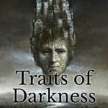Freedom on Alcatraz Island
A Personal Journey

The once-familiar sounds of doors clanging shut did not make me cringe or dredge up suppressed memories. Instead, they had the curious effect of bringing me a sense of peace. Integrating a difficult past into a present inextricably intertwined with a single impulsive action committed long ago can be hard. Many people that have been to prison allow their imprisonment to become their identity; you become known as a felon when convicted. Yet the process of reintegration after a long stretch of incarceration often means reconciling the two. And it was this reconciliation that took place during my recent trip to Alcatraz.
I served a decade in various prisons for a single bank robbery I committed at the tender age of 19. Many of the sights that caused such awe in the spectators with me as I walked down C-D Street had once been part of my everyday existence. Hearing macabre stories about infamous criminals did not attract my attention, for I had eaten and played card games with flawed humans guilty of worse. Glorifying violence is not as appealing to me as I get older and wiser.
However, what impacted me deeply was the metaphor presented by this harsh island jutting through the dense fog of the San Francisco Bay. It seemed not just apt for me, but also for the changing culture I find myself a part of, yet at times distinct from. Alcatraz, almost from its inception as a governmental island, served as a protective bulwark against a cruel and inhospitable world. Initially, it offered protection from alien foes, guarding those fleeing their misery and praying fervently for fortune and redemption.
Later, Alcatraz served as protection from internal enemies, helping to exile the worst criminals on a harsh and rocky island physically and spiritually separated from a land that could still look the symbol of their shame.
In the present, Alcatraz Island is a park, and it is in this function, I realized as I walked the rain-drenched path back past the old mortuary, that Alcatraz still serves as a protector. By preserving aspects of our history that do not necessarily portray us in our most positive light, by keeping natural resources from overexploitation, the infamous place helps guard us against ourselves. A natural tendency is to try to overlook and diminish aspects of the past that do not conform to our current ideas. To perhaps even forget them, or, worse, attempt to revise them so they fit an expedient narrative.
My beloved family expressed fear and anxiety before and during this journey to Alcatraz. They felt worried that the burdens and ghosts of the past would be too much for me to handle. What I had a hard time then explaining was that I had gained valuable insights into the nuances of freedom by learning to evolve with those ghosts. Learning to love and leverage my past, using it as an asset as I try to build a better future, will be a continuing expedition requiring humility and patience. Visiting places such as Alcatraz help me do that, in an odd and ironic way.
The Native Americans who protested on the island have an important role in adding to the narrative of the island’s protective role, because our own national and cultural stories are tied to crimes committed in the brash angst of our adolescence. Alcatraz not only helped remind me of the need to reconcile my own past with the present, but also of the necessity of maintaining a honest but reasonable commitment to assimilating the different conflicting histories of our society.
When one is born on the lands now known collectively as these United States, they become American. As with a felon, the term weaves itself into the tapestry of one’s identity. It can mean different things to different people, but it holds a deep-rooted symbolism to most. A struggle for many in today’s generations, my generations, is the reconciliation of our nation’s often sordid past with its brilliant virtues. Alcatraz has as part of its legacy housing the first lighthouse on the west coast. What would be a prison also was the path to safety as it led weary mariners through the fog and tumultuous waters of the bay.
One of the first things I saw during this visit to Alcatraz was the old Warden’s house, crumbled and overridden by verdant plants. One of the last things I encountered before lining up to depart was another sign reminding me that some areas were off-limits as people fought to preserve what parts of the island’s history they could.
The once-familiar sounds of doors clanging shut and cramped cells were a welcome reminder that my past has passed.
I left Alcatraz with a sense of peace.
About the Creator
Stanley Gray
Stanley Gray is an award-winning writer who creates exciting stories with flawed characters. Traits of Darkness, the first in its series, is available on Amazon. He lives in beautiful Oregon, and loves spending time with his cat, Calypso.







Comments
There are no comments for this story
Be the first to respond and start the conversation.